The Enermax Revolution D.F. 12 750W ATX 3.1 PSU Review: Compact Contender
by E. Fylladitakis on June 7, 2024 8:00 AM EST- Posted in
- Cases/Cooling/PSUs
- PSUs
- 80Plus Gold
- Enermax
- 12VHPWR
- 12V-2x6
- ATX v3.1
Hot Test Results (~45°C Ambient)
During its hot testing phase, the Enermax Revolution D.F. 12 750W PSU shows a slight decrease in efficiency under heavy loads, recording figures of 89.2% under a 115 VAC input and 91.3% with a 230 VAC source, compared to 90.0% and 92.1%, respectively, during cold testing. This reduction is moderate and occurs almost linearly across the entire load range. Despite the decline, there are no signs of measurable thermal stress, not even at maximum load. The PSU is designed to operate efficiently even at an ambient temperature of up to 50°C, and the effects of higher temperatures on its performance are well-managed, indicating robust thermal performance.
Under hot testing conditions, the Enermax Revolution D.F. 12 750W PSU's fan activates swiftly and increases its speed more quickly than in cooler environments, almost linearly in relevance to the load. As it approaches 90% capacity, the fan reaches its maximum speed. This approach maintains tolerable acoustic levels up to approximately 40-45% load capacity. However, as the load continues to increase beyond this point, the fan noise becomes markedly louder, making the PSU audibly prominent, clearly favoring reliability over acoustics.
Despite its slightly more compact size, the Enermax Revolution D.F. 12 750W PSU effectively maintains cooling, consistently keeping internal temperatures low, even at maximum load. The design showcases an excellent balance of acoustic comfort and thermal efficiency, ensuring the PSU operates within safe thermal limits at all times without even coming close to triggering the over-temperature protection (OTP).


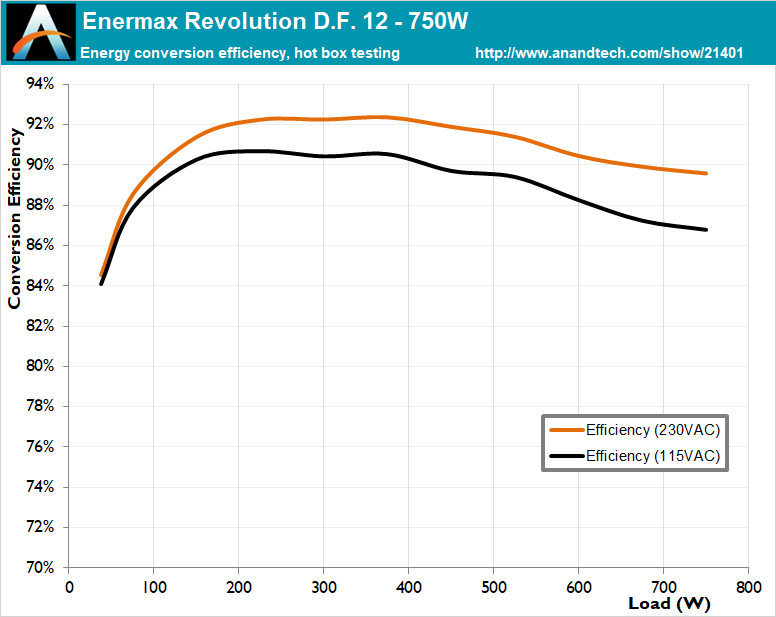
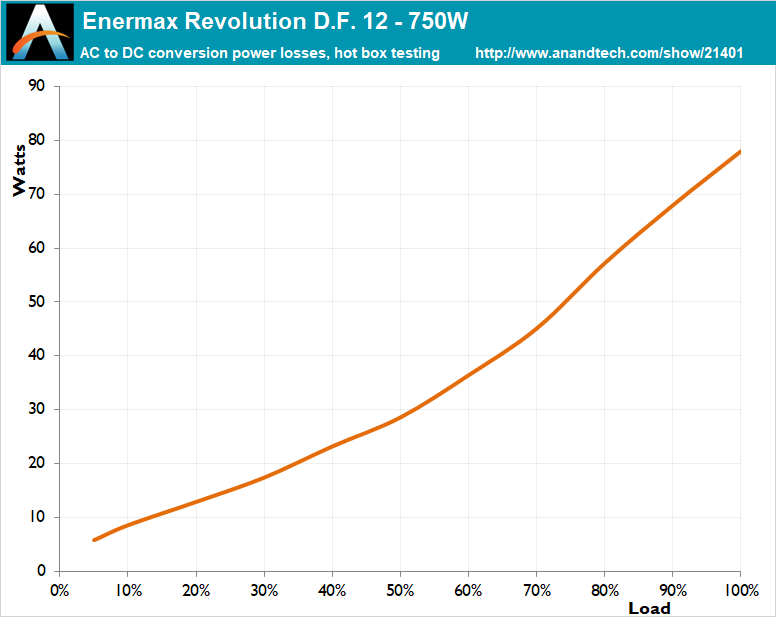
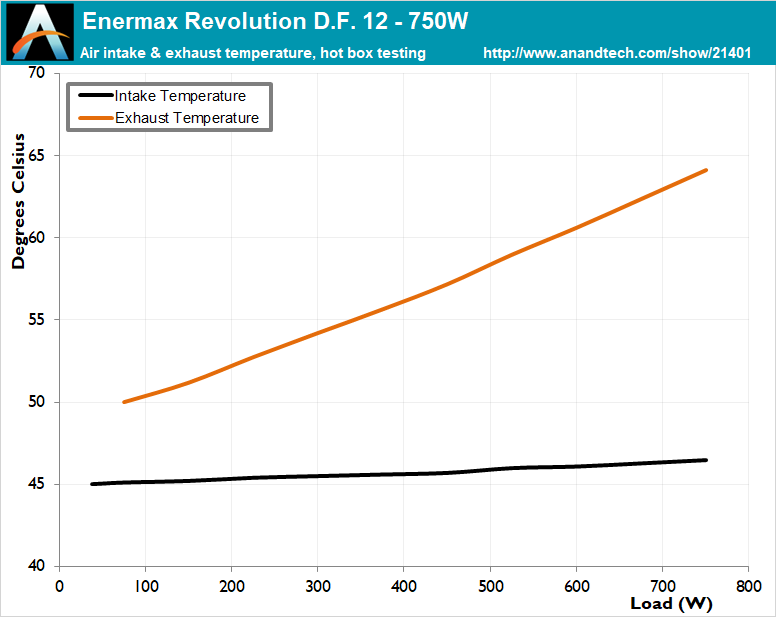
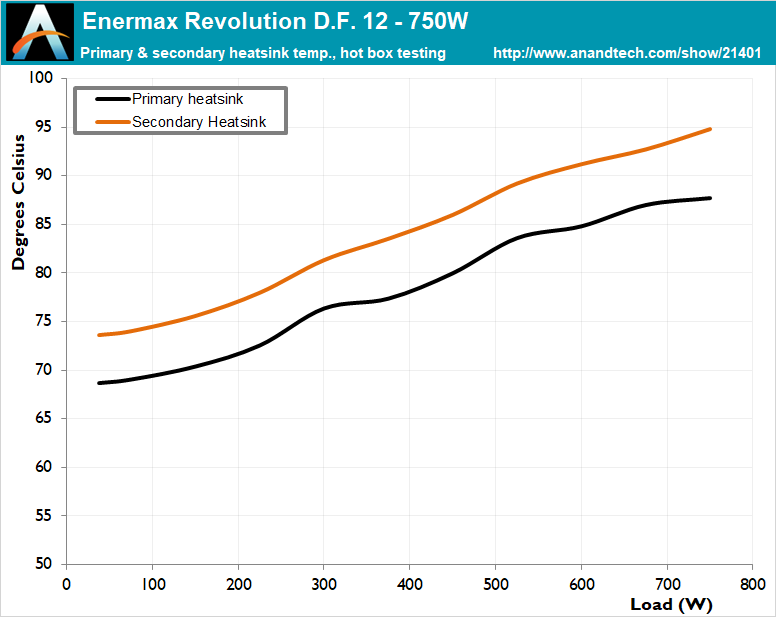
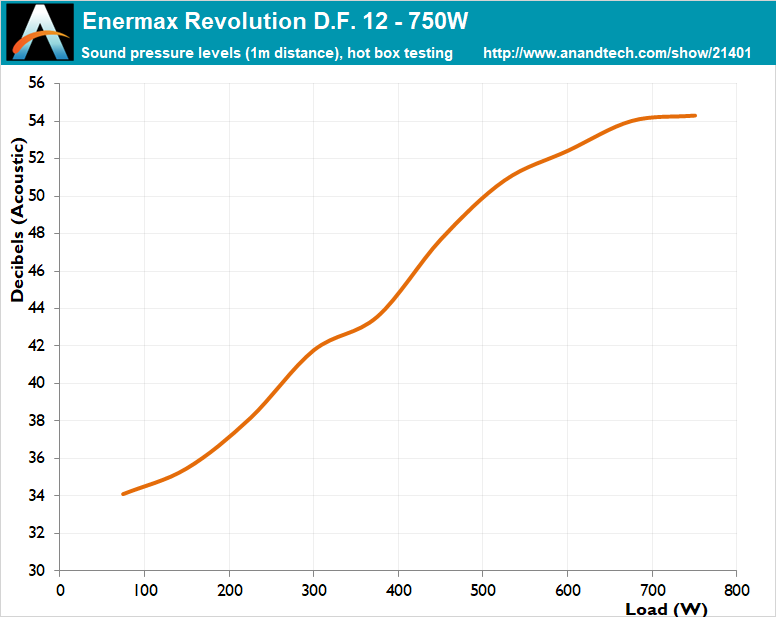








1 Comments
View All Comments
Threska - Saturday, June 8, 2024 - link
"The Active Power Factor Correction (APFC) setup comprises a standard rectifying bridge attached to the main APFC heatsink, supplemented by an additional heatsink, two APFC MOSFETs (WML28N60C4), a diode, and a large inductor paired with two Rubycon 270 μF capacitors."Interesting how important PFC is.
https://youtu.be/ZwkNTwWJP5k